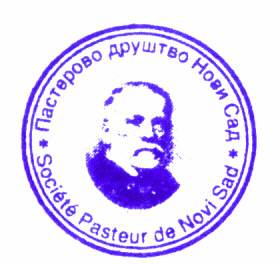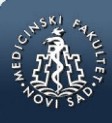md-medicaldata
Main menu:
- Naslovna/Home
- Arhiva/Archive
- Godina 2024, Broj 1
- Godina 2023, Broj 3
- Godina 2023, Broj 1-2
- Godina 2022, Broj 3
- Godina 2022, Broj 1-2
- Godina 2021, Broj 3-4
- Godina 2021, Broj 2
- Godina 2021, Broj 1
- Godina 2020, Broj 4
- Godina 2020, Broj 3
- Godina 2020, Broj 2
- Godina 2020, Broj 1
- Godina 2019, Broj 3
- Godina 2019, Broj 2
- Godina 2019, Broj 1
- Godina 2018, Broj 4
- Godina 2018, Broj 3
- Godina 2018, Broj 2
- Godina 2018, Broj 1
- Godina 2017, Broj 4
- Godina 2017, Broj 3
- Godina 2017, Broj 2
- Godina 2017, Broj 1
- Godina 2016, Broj 4
- Godina 2016, Broj 3
- Godina 2016, Broj 2
- Godina 2016, Broj 1
- Godina 2015, Broj 4
- Godina 2015, Broj 3
- Godina 2015, Broj 2
- Godina 2015, Broj 1
- Godina 2014, Broj 4
- Godina 2014, Broj 3
- Godina 2014, Broj 2
- Godina 2014, Broj 1
- Godina 2013, Broj 4
- Godina 2013, Broj 3
- Godina 2013, Broj 2
- Godina 2013, Broj 1
- Godina 2012, Broj 4
- Godina 2012, Broj 3
- Godina 2012, Broj 2
- Godina 2012, Broj 1
- Godina 2011, Broj 4
- Godina 2011, Broj 3
- Godina 2011, Broj 2
- Godina 2011, Broj 1
- Godina 2010, Broj 4
- Godina 2010, Broj 3
- Godina 2010, Broj 2
- Godina 2010, Broj 1
- Godina 2009, Broj 4
- Godina 2009, Broj 3
- Godina 2009, Broj 2
- Godina 2009, Broj 1
- Supplement
- Galerija/Gallery
- Dešavanja/Events
- Uputstva/Instructions
- Redakcija/Redaction
- Izdavač/Publisher
- Pretplata /Subscriptions
- Saradnja/Cooperation
- Vesti/News
- Kontakt/Contact
 Pasterovo društvo
Pasterovo društvo
- Disclosure of Potential Conflicts of Interest
- WorldMedical Association Declaration of Helsinki Ethical Principles for Medical Research Involving Human Subjects
- Committee on publication Ethics
CIP - Каталогизација у публикацији
Народна библиотека Србије, Београд
61
MD : Medical Data : medicinska revija = medical review / glavni i odgovorni urednik Dušan Lalošević. - Vol. 1, no. 1 (2009)- . - Zemun : Udruženje za kulturu povezivanja Most Art Jugoslavija ; Novi Sad : Pasterovo društvo, 2009- (Beograd : Scripta Internacional). - 30 cm
Dostupno i na: http://www.md-medicaldata.com. - Tri puta godišnje.
ISSN 1821-1585 = MD. Medical Data
COBISS.SR-ID 158558988
PUŠENJE I ZNAČAJ MOTIVACIJE U ODVIKAVANJU OD PUŠENJA
/
SMOKING AND THE IMPORTANCE OF MOTIVATION IN QUITTING SMOKING
Authors
Mirjana Kolundžić1, Veselin Bojat1, Jarmila Lačokova Krasnikova2, Igor Mikov 3,4, Rastislava Krasnik 3,5, Jelena Zvekić Svorcan 3,6
1Health Center “Novi Sad”, Novi Sad
2Health Center Bač, Bač
3University of Novi Sad, Faculty of Medicine Novi Sad
4The University Clinical Centre of Vojvodina, Clinic of Psychiatry
5Institute for Children and Youth Health Care of Vojvodina
6Special Hospital for Rheumatic Diseases, Novi Sad
UDK: 613.84
616-056.8-08
The paper was received / Rad primljen: 30.03.2024
Accepted / Rad prihvaćen: 15.04.2024.
Correspondence to:
Dr Mirjana Kolundžić
Health Center “Novi Sad”, Novi Sad
Bulevar Cara Lazara 75 Novi Sad, Serbia
e-mail: kolundzic.mirjana@dzns.rs
Abstract
Smoking represents an important public health problem due to its negative impact on the health of each individual.This harmful habit is present in all age groups, and smokers are increasingly adopting other forms of tobacco consumption besides standard cigarettes. In clinical practice, a large number of non-pharmacological methods are used in smoking cessation initiatives, but their success is largely determined by the smokers’ motivation and commitment to the process. A wide range of scales have been developed to assess smokers’ motivation to quit smoking. These tools should be adopted in the primary healthcare settings to assess and promote patients’ motivation to quit smoking, as well as to make them aware of the importance of a healthy lifestyle. This evaluation should be followed by teamwork, focusing on the support and empowerment of smokers and their families, thus increasing the chance of achieving the goal of smoking cessation and long-term abstinence.
Ključne reči:
smoking; smoking cessation; motivation
Sažetak
Pušenje predstavlja važan javno-zdravstveni problem, zbog negativnog uticaja na zdravlje svakog pojedinca. Prisutno je u svim starosnim grupama, a pušači osim standardnih cigareta koriste i druge vidove konzumiranja duvana. U kliničkoj praksi u odvikavanju od pušenja koristi se veoma veliki broj nefarmakoloških metoda, ali je u ovom procesu veoma važna motivacija pušača. Razvijen je veliki broj skala pomoću kojih se procenjuje motivacija pušača za odvikavanje od pušenja. U okviru primarne zdravstvene zaštite neophodno je proceniti i podsticati motivaciju pacijenta za odvikavanje od pušenja, osvestiti važnost zdravih stilova života. Timskim radom, evaluacijom, podrškom i osnaživanjem pušača i njegove porodice, šansa za postizanje cilja se povećava.
Keywords:
pušenje; odvikavanje od pušenja; motivacija
References:
- WHO. WHO report on the global tobacco epidemic, 2017: monitoring tobacco use and prevention policies. Geneva: World Health Organization; 2017.[Internet].Available from: https://www.who.int/tobacco/global_report/2017/en.
- Jafari A, Rajabi A, Gholian-Aval M, Peyman N, Mahdizadeh M, Tehrani H. National, regional, and global prevalence of cigarette smoking among women/females in the general population: a systematic review and meta-analysis. Environ Health Prev Med. 2021;26(1):5.
- Čanković S, Ukropina S, Mijatović Jovanović V, Tamaš T, Nićiforović Šurković O, Čanković D. Prevalencija pušenja duvana i elektronskih cigareta među učenicima srednjih škola u Novom Sadu. Medicinski pregled. 2018;71(11-12):349-54.
- Petrović V, Ćurčić L, Rožek Mitrović T, Višnjevac D. Pušenje cigareta adolescenata sa osvrtom na porodični uticaj na razvoj ove navike. Timočki medicinski glasnik. 2017;42(1):12-7.
- Wu W, Zhang R, Jin Y, Lu Y, Lu Z, Li T et al. Cancer trends and risk factors in China over the past 30 years (1990-2019). J Cancer. 2023;14(10):1935-45.
- Caliri AW, Tommasi S, Besaratinia A. Relationships among smoking, oxidative stress, inflammation, macromolecular damage, and cancer. Mutat Res Rev Mutat Res. 2021;787:108365.
- Noguchi S, Ishimaru T, Fujino Y, Yatera K, Tabuchi T. Association of cigarette smoking with increased use of heated tobacco products in middle-aged and older adults with self-reported chronic obstructive pulmonary disease, asthma, and asthma-COPD overlap in Japan, 2022: the JASTIS study. BMC Pulm Med. 2023;23(1):365.
- Djekic Malbasa J, Kovacevic T, Zaric B, Dugandzija T, Nikolin B, Radovanovic D et al. Decade of lung cancer in Serbia: tobacco abuse and gender differences. Eur Rev Med Pharmacol Sci. 2023;27(7):3105-16.
- Malignant tumors in Republic of Serbia 2019. Serbian cancer registry. Institute of Public Health of Serbia “Dr Milan Jovanović Batut” 2021.[Internet]. Available from: https://www.batut.org.rs/download/publikacije/maligniTumoriURepubliciSrbiji2019.pdf
- Khalil RB, Aoun-Bacha Z, Hlais S, Richa S. Smokers’ knowledge about smoking-related health problems in Lebanon. Subst Use Misuse. 2014;49(3):270-6.
- Ishikawa Y, Terao C. The Impact of Cigarette Smoking on Risk of Rheumatoid Arthritis: A Narrative Review. Cells. 2020;9(2):475.
- Shiri R, Karppinen J, Leino-Arjas P, Solovieva S, Viikari-Juntura E. The association between smoking and low back pain: a meta-analysis. Am J Med 2010;123:35.
- LaRowe LR, Ditre JW. Pain, nicotine, and tobacco smoking: current state of the science. Pain. 2020;161(8):1688-93.
- Kastaun S, Brose LS, Scholz E, Viechtbauer W, Kotz D. Mental Health Symptoms and Associations with Tobacco Smoking, Dependence, Motivation, and Attempts to Quit: Findings from a Population Survey in Germany (DEBRA Study). Eur Addict Res. 2022;28(4):287-96.
- Bacha ZA, Layoun N, Khayat G, Allit S. Factors associated with smoking cessation success in Lebanon. Pharm Pract (Granada). 2018 ;16(1):1111.
- Sari IW. The Effect of Peer Group Support on Motivation to Quit Smoking Among Adolescents. Journal of Health Sciences,2022; 15(02):120-5.
- Nian T, Guo K, Liu W, Deng X, Hu X, Xu M et al. Non-pharmacological interventions for smoking cessation: analysis of systematic reviews and meta-analyses. BMC Med. 2023;21(1):378.
- Jackson SE, Kotz D, West R, Brown J. Moderators of real-world effectiveness of smoking cessation aids: a population study. Addiction. 2019;114(9):1627-38.
- Maiwald P, Bischoff M, Lindinger P, Tinsel I, Sehlbrede M, Fichtner UA et al. The Effect of Interactivity, Tailoring, and Use Intensity on the Effectiveness of an Internet-Based Smoking Cessation Intervention Over a 12-Month Period: Randomized Controlled Trial. J Med Internet Res. 2023;25:47463.
- Agaku I, Egbe C, Ayo-Yusuf O. Utilisation of smoking cessation aids among South African adult smokers: findings from a national survey of 18 208 South African adults. Fam Med Community Health. 2021;9(1):000637.
- Šagrić Č, Radulović O, Bašić S, Bogdanović M, Marković R, Tasić A. Odvikavanje od pušenja u studentskoj populaciji. Acta medica Medianae. 2006;45(2):34-40.
- Peña S, Ilmarinen K, Kestilä L, Ruokolainen O, Ollila H, Parikka S et al. Changes in prevalence and sociodemographic correlates of tobacco and nicotine use in Finland during the COVID-19 pandemic. Eur J Public Health. 2023;33(5):844-50.
- Jackson SE, Cox S, Shahab L, Brown J. Prevalence of use and real-world effectiveness of smoking cessation aids during the COVID-19 pandemic: a representative study of smokers in England. Addiction. 2022;117(9):2504-14.
- Hussain S, Sreeramareddy CT. Smoking cessation behaviors and reasons for use of electronic cigarettes and heated tobacco products among Romanian adults. Sci Rep. 2022;12(1):5446.
- Kastaun S, Brown J, Kotz D. Association between income and education with quit attempts, use of cessation aids, and short-term success in tobacco smokers: A social gradient analysis from a population-based cross-sectional household survey in Germany (DEBRA study). Addict Behav. 2020;111:106553.
- Girvalaki C, Filippidis FT, Kyriakos CN, Driezen P, Herbeć A, Mons U et al; The Eurest-Plus Consortium OBO. Perceptions, Predictors of and Motivation for Quitting among Smokers from Six European Countries from 2016 to 2018: Findings from EUREST-PLUS ITC Europe Surveys. Int J Environ Res Public Health. 2020;17(17):6263.
- Dhumal GG, Pednekar MS, Gupta PC, Sansone GC, Quah AC, Bansal-Travers M et al. Quit history, intentions to quit, and reasons for considering quitting among tobacco users in India: findings from the Tobacco Control Policy Evaluation India Wave 1 Survey. Indian J Cancer. 2014;51(1):39-45.
- Papadakis S, Katsaounou P, Kyriakos CN, Balmford J, Tzavara C, Girvalaki C et al; EUREST-PLUS consortium. Quitting behaviours and cessation methods used in eight European Countries in 2018: findings from the EUREST-PLUS ITC Europe Surveys. Eur J Public Health. 2020;30(3):26-33.
- Lund M, Lund I. Smoking cessation aids and strategies: a population-based survey of former and current smokers in Norway. BMC Public Health. 2022;22(1):631.
- Herbeć A, Zatoński M, Zatoński WA, Janik-Koncewicz K, Mons U, Fong GT et al; EUREST-PLUS consortium. Dependence, plans to quit, quitting self-efficacy and past cessation behaviours among menthol and other flavoured cigarette users in Europe: The EUREST-PLUS ITC Europe Surveys. Tob Induc Dis. 2019;16:19.
- El Asmar ML, Laverty AA, Vardavas CI, Filippidis FT. How do Europeans quit using tobacco, e-cigarettes and heated tobacco products? A cross-sectional analysis in 28 European countries. BMJ Open. 2022;12(4):059068.
- Jackson SE, Beard E, Michie S, Shahab L, Raupach T, West R, Brown J. Are smokers who are regularly exposed to e-cigarette use by others more or less motivated to stop or to make a quit attempt? A cross-sectional and longitudinal survey. BMC Med. 2018;16(1):206.
- Pešić I, Danilović M, Šćekić Š, Gvozdenović B. Motivacija za odvikavanje od pušenja i uspešnost odvikavanja. Pneumon, 2004:41.
- Heatherton TF, Kozlowski LT, Frecker R C, Fagerstrom KO. The Fagerstrom test for nicotine dependence: A revision of the Fagerstrom Tolerance Questionnaire. British Journal on Addiction, 1991;86: 1119–27.
- de Granda-Orive JI, Pascual-Lledó JF, Asensio-Sánchez S, Solano-Reina S, García-Rueda M, Martínez-Muñiz MÁ et al. Is the motivation to quit smoking greater if the smoker is going to quit smoking of their own free will or when advised by a health professional? Tob Induc Dis. 2022;20:47.
- Richmond R, Kehoe L, Webster I. Multivariate models for predicting abstention following intervention to stop smoking by general practitioners. Addiction 1993;88:1127–35.
- Borchardt B, Kastaun S, Pashutina Y, Viechtbauer W, Kotz D. Motivation to stop smoking in the German population between 2016 - 2021 and associated factors: results from a repeated cross-sectional representative population survey (German Study on Tobacco Use, DEBRA study). BMJ Open. 2023;13(5):068198.
PDF: 11-Kolundžić M. et al MD-Medical Data 2024;16(1) 067-070.pdf
 Medicinski fakultet
Medicinski fakultet